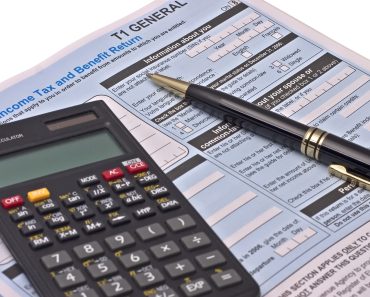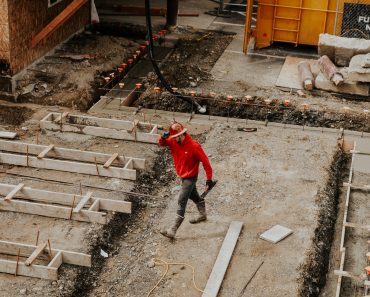
Navigating the world of home buying can be daunting, especially for first-time buyers. Fortunately, the Canadian government offers a tax credit to help ease the financial burden. In this blog post, we’ll explain everything you need to know about the home buyers’ amount, including eligibility criteria, qualifying homes, and how to claim this tax credit on your tax return.
Home Buyers’ Amount
Claiming the Amount
In 2022, first-time home buyers can claim up to $10,000 for the purchase of a qualifying home, provided that both of the following conditions are met:
- You (or your spouse or common-law partner) acquired a qualifying home.
- You did not live in another home that you (or your spouse or common-law partner) owned in the year of acquisition or in any of the four preceding years.
Note: For purchases made in 2021 or earlier, you can claim up to $5,000 if you meet the conditions above.
Qualifying Home
A qualifying home must be registered in your or your spouse’s or common-law partner’s name according to the applicable land registration system and must be located in Canada. This includes existing homes and homes under construction.
Types of Qualifying Homes
The following types of properties are considered qualifying homes:
- Single-family houses
- Semi-detached houses
- Townhouses
- Mobile homes
- Condominium units
- Apartments in duplexes, triplexes, fourplexes, or apartment buildings
Note: A share in a co-operative housing corporation that entitles you to own and gives you an equity interest in a housing unit located in Canada also qualifies. However, a share that only provides you with the right to tenancy in the housing unit does not qualify.
You must intend for you or a related person with a disability to occupy the home as a principal place of residence within one year after it is acquired.
Persons with Disabilities
The first-time home buyer requirement does not apply if either of the following conditions applies to you:
- You are eligible for the disability tax credit.
- You acquired the home for the benefit of a related person who is eligible for the disability tax credit.
Note: The purchase must be made to allow the person with the disability to live in a home that is more accessible or better suited to their needs. For the purposes of the home buyers’ amount, a person with a disability is someone who is eligible for the disability tax credit for the year that the home is acquired.
You must intend that you or a related person with a disability will occupy the home as a principal place of residence within one year after it is acquired.
Completing Your Tax Return
Claiming the Home Buyers’ Amount
Enter $10,000 on line 31270 of your tax return if you are not splitting the amount with your spouse or common-law partner. You and your spouse or common-law partner can split the claim, but the combined total cannot exceed $10,000. When multiple people are entitled to the amount (e.g., when two people jointly buy a home), the total of all amounts claimed cannot be more than $10,000.
Supporting Documents
Filing Electronically or a Paper Return
Ensure you keep all your documents, as the Canada Revenue Agency (CRA) may request to see them later.
By understanding the eligibility requirements and claiming process for the first-time home buyers’ tax credit, you can take advantage of this valuable financial incentive when purchasing your first home. This tax credit can help reduce your overall tax burden, making homeownership more accessible and affordable.
Additional Tips for First-Time Home Buyers
In addition to claiming the home buyers’ amount, first-time home buyers should also consider the following tips to make the home buying process smoother and more financially manageable:
1. Save for a Down Payment
A substantial down payment can significantly reduce your mortgage payments and interest costs. Aim to save at least 20% of the purchase price to avoid paying mortgage default insurance.
2. Get Pre-Approved for a Mortgage
Obtaining pre-approval for a mortgage can help you understand how much you can afford and streamline the home buying process. Additionally, pre-approval can demonstrate to sellers that you’re a serious buyer.
3. Explore Other Government Programs
The Canadian government offers various programs for first-time home buyers, such as the First-Time Home Buyer Incentive and the Home Buyers’ Plan. These programs can provide additional financial assistance and resources during the home buying process.
4. Hire a Real Estate Agent
Working with a knowledgeable and experienced real estate agent can help you navigate the home buying process, negotiate better deals, and find the right property for your needs.
5. Inspect the Home
A professional home inspection can identify potential issues or repairs needed before purchasing a property, allowing you to make informed decisions and avoid costly surprises later on.
6. Budget for Closing Costs
Closing costs can include legal fees, land transfer taxes, and other expenses. Ensure you budget for these costs, which can typically range from 1.5% to 4% of the home’s purchase price.
7. Plan for Ongoing Expenses
Homeownership involves ongoing expenses, such as property taxes, insurance, maintenance, and utilities. Be sure to budget for these costs to ensure you can comfortably manage your finances as a homeowner.
By following these tips and taking advantage of the first-time home buyers’ tax credit, you can make your dream of homeownership a reality. Don’t forget to claim the home buyers’ amount on your tax return to enjoy the financial benefits provided by the Canadian government. Happy house hunting!







